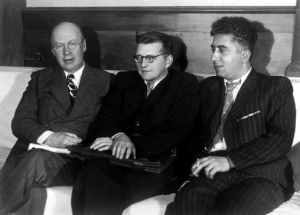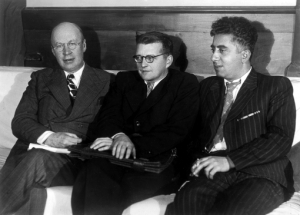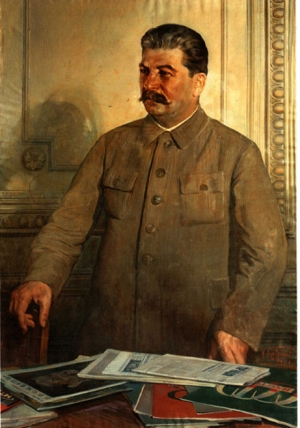
A wave of creativity: music and the Russian Revolution
Sabby Sagall describes the wave of creativity unleashed by the Russian Revolution, altering the course of twentieth century classical music.
The carnage and brutality of World War One had punctured the balloon of late nineteeth-century optimism and established that the industrial and scientific progress of capitalism had not led to a world based on justice and reason but to unimaginable horror. Industrial cities had created unprecedented wealth but also poverty and alienation hitherto unknown.
The Russian revolution offered a beacon of hope. The spectacle of ordinary workers and peasants grasping the reins of society, creating their own revolutionary state through elected councils or soviets, inspired an entire generation in a world grown weary of internecine war. Of course, the western capitalist ruling classes weren't going to take this unprecedented challenge to their wealth and power lying down, and unleashed a bloody civil war with the aim of destroying the fledging workers' state. Musically, the extremes of these social contradictions could no longer be adequately expressed in the traditional form of the classical symphony that had expressed the confidence of the eighteenth century bourgeoisie as they overthrew the old order.
In the early days of the revolution, the Bolsheviks adopted a civilising mission intended to cultivate new socialist attitudes and habits in the masses, but also new cultural forms that would both reflect the new way of life and also have broad appeal. One aspect of this was the attempt to create a 'socialist' musical culture involving the overcoming of the divide between elite and popular culture, both by democratising the 'high' culture of the pre-revolutionary elite, making it more accessible to the masses, and by cultivating new forms of artistic expression.
However, after the Bolshevik seizure of power in October 1917, the central task of the revolution was survival in the face of international right-wing forces that moved in to attempt to destroy it. With the regime's survival at stake, cultural matters had a relatively low priority. Where music was concerned, the Bolsheviks' primary task was to establish control over the 'commanding heights', by nationalising the conservatories, publishing houses, and theatres, as well as confiscating valuable musical instruments from private collections and their aristocratic owners trying to flee the country.
The Bolsheviks moved quickly to achieve administrative and economic control over musicians and musical life, but had little time or interest in formulating music policy itself. As part of the effort to mobilise support for the revolution among Russia's toiling masses, and extend the revolution to the cultural sphere, the government funded a host of programmes administered by the Red Army and the Commissariat of Enlightenment (Nakrompros) as well as a vast network of Proletarian Culture (Proletkult) organisations. These programmes offered musicians, writers and artists employment and the opportunity to continue pre-revolutionary activities, albeit under very different conditions.
In music, as in other areas, a main objective of the Commissariat of Enlightenment led by Anatoly Lunacharsky was to cultivate old 'specialists' and enlist their support for the revolutionary project. With some notable exceptions, musicians found in early years that they had considerable latitude in their affairs. They not only facilitated but largely defined the terms under which musical institutions made their transition to Soviet power and the way musical life responded to the revolution.
For most Russians, the years of revolution, civil war and Western intervention to attempt to crush Soviet power were haunted by hunger and terrible material hardship. Survival was the key priority while musicians began to formulate their creative responses to the challenges raised by the revolution. A few pursued radical creative agendas in an effort to link artistic and revolutionary iconoclasm - smashing the previous social and ideological order. Some tried to enlist music directly in the revolutionary struggle and the effort to win the Civil War. But for most, there were strong threads of continuity that linked them to the pre-revolutionary period, and these dominated their creative activities and attitudes towards Soviet power.
The October revolution had given fresh impetus to cultural life, with a great flowering of the arts. But it also created difficulties. The problem was that the chief moving force of the revolution was an oppressed, propertyless, and necessarily uneducated working class. This was contrary to the bourgeois revolution in England or France where the revolutionary class was an educated, cultured class of property owners. The weakness of the Russian bourgeoisie and the general lack of confidence in its capacity to produce social and political change meant that Russian culture, including music, could not express their interests.
True, the Bolshevik leaders were mostly men of the intelligentsia, some possessing a deep cultural understanding of the world. But the cadres consisted mostly of self-educated workers and half-educated people of petty bourgeois background. The party had trained them in politics, organisation and sometimes in Marxist philosophy. But often their approach to cultural affairs showed that a little knowledge could be worse than complete ignorance.
Most intellectuals were hostile to the revolution. Many emigrated. But many also served the new regime as 'specialists'. A few even became enthusiastically converted to the revolution. But most of the intelligentsia were either too conservative in habits or else too intimidated or mediocre to exercise fruitful cultural influence. They reacted badly when placed under the orders of semi-educated or self-educated commissars. On the other hand, many commissars lacked confidence, but tried to cover up their inner uncertainty with bluff and bluster. They believed that Marxism, in which they were not fully educated, provided the master key to all problems of society.
Trotsky and the other Bolshevik leaders tried to bridge the gulf. But after the devastation of the civil war, the party hierarchy began to free itself from public, workers' control and began to impose its dictates on the scientist, the writer and musician. The slogans of 'proletarian art' and 'proletarian culture' were coined and became popular. The theory arose that just as there had been feudal and capitalist epochs in the history of civilisation, accompanied by their respective cultures, so the proletarian dictatorship would inaugurate its own specific culture permeated by Marxism, internationalism, etc.
This idea appealed to some Bolshevik intellectuals and young workers in whom the revolution had awakened a desire for education but also iconoclastic instincts. Many peasants, too, displayed anarchic hostility towards everything to do with the gentry's way of life, including its 'cultural values'. When the peasant set fire to the landlord's mansion, he often let go up in flames the library and paintings.
Trotsky argued it was harmful to reject the cultural heritage of the bourgeois era: the working class had, on the contrary, to take possession of it and protect it, while viewing it critically. But the working class, as an oppressed, exploited and uneducated class, could not create its own culture: it emerges from bourgeois rule in a condition of cultural pauperism. And insofar as the working class creates a classless, socialist society, so it abolishes itself and sets about creating a truly universal, classless human culture.
In the late 19th and early 20th century, European music was transformed by two strands of modernism: the atonal music developed by Arnold Schoenberg and his two leading followers, Anton Webern and Alban Berg, and the revolutionary music of Russian composer Igor Stravinsky. Atonality is music that lacks a tonal centre, that does not depend on the 'diatonic' system of major and minor keys which had been the basis, and had provided the coherence, of European art music since the late 17th century.

1. Igor Stravinsky(1882-1971)
Stravinsky's music remains within the tradition of modern tonal or diatonic harmony. But he transformed music through his revolutionary approach to rhythm and his use of dissonant harmonies. In Paris in 1913, the dynamic, rhythmic innovation of his ballet The Rite of Spring was evident. At its first performance, the music provoked derisive laughter which quickly developed into an uproar among the well-heeled French bourgeois audience.
Like Schoenberg, Stravinsky had discovered that increasing chromaticism was loosening the power of diatonic harmony to sustain the movement of music. (Chromaticism is a compositional technique interspersing diatonic notes and chords of the traditional tonal scale with notes of the chromatic scale, consisting, as it does, of semitones. Chromaticism is in contrast or addition to tonality or diatonicism - the conventional major and minor scales. It became more widely used in the second half of the nineteenth century).
Stravinsky's answer to the problem was different. The Rite of Spring, composed as music to accompany scenes of earthly joy and celestial triumph as understood by the Slavs, showed with almost savage force that rhythm could be a new motivating impetus. The point here is that in European music since the Renaissance, rhythm had been subservient to melody and harmony. In contrast, in The Rite of Spring, especially in the final Sacrificial Dance, it is rhythm that drives the music, with harmony of secondary importance. Stravinsky's earlier career had revealed the influence of his teacher Rimsky-Korsakov, composer of the symphonic suite Scheherezade. This was notably shown in Stravinsky's ballet suite The Firebird (1909-10), a brilliant and exotic fairy tale.
But his style matures in his second ballet Petrushka where rhythm is becoming the most important structural and expressive element. Petrushka uses a significant number of Russian folk tunes; it also reveals fantastic harmonies associated with the puppets which are based on traditional techniques that produced sharp dissonant combinations (eg, the so-called Petrushka chord).
Again, these dissonances express the intensifying contradictions and dislocation of a society in which advanced capitalist relations prevailed in the urban industrial areas – Petrograd's Putilov engineering factory boasted the most highly developed technology in Europe – alongside semi-feudal relations in the countryside and an absolute monarchy. And, importantly, by the time Firebird and Petrushka were produced, Russia had already experienced the 1905 revolution, the 'dress-rehearsal' for the 1917 revolution.
So, while Stravinsky's music cannot strictly be described as 'music of the Russian revolution' – he himself was hostile to the revolution, left Russia in 1914 and didn't return until 1962 – yet it is music whose dissonances and rhythmic innovations express the dislocation and contradictions of society in the throes of the deepening crisis that were the backdrop to World War One and the revolution itself.

2. Serge Prokoviev (1891-1953)
Prokofiev's life and musical styles fall into three periods: the first being his formative years in Russia, the second (1920-1933) his years in Paris, and the third in which he returned to his homeland. The music of Prokofiev's first period is mostly of the primitive style brought about by the onslaught of Stravinsky's The Rite of Spring. Prokofiev's music of this period utilises driving rhythms and dissonant harmonies, and includes his first three piano concertos and the ballet Ala and Lolly. Also from this period comes the delightful "Classical" Symphony no. 1 in D major, written to convince his critics that he could, when he wanted, compose in the refined style of Mozart.
Prokofiev's second period resulted in such works as the Symphonies Two, Three and Four, two more piano concertos, the satirical opera The Love for Three Oranges (from which comes the famous and jaunty March) and two more ballets. Many of Prokofiev's most famous compositions were written after he had returned to Russia in 1933. These include the children's story for orchestra and narrator, Peter and the Wolf, several film scores, Romeo and Juliet, one of the most popular ballets of the twentieth century, and his greatest symphony, the Symphony No. 5.
In keeping with government dictates of the Stalin Regime, this music is more tonal, less dissonant, and conforms to classical styles, making them generally accessible to the public. Even so, Prokofiev was denounced in 1948 by the government as being "too modern" and he composed no more music for the remainder of his life. Prokofiev had composed the gigantic Cantata for the 20th Anniversary of the October Revolution, originally intended for performance during the anniversary year but effectively blocked by Platon Kerzhentsev, head of the culture and science department of the Communist Party of the Soviet Union, who demanded less 'incomprehensible music'. The Cantata had to wait until 5th April 1966 for a partial premiere, just over 13 years after the composer's death.

3. Dmitri Shostakovich (1906-1975)
Unlike his countrymen Stravinsky and Prokofiev, Shostakovich opted to remain in Russia throughout his life. Stylistically, this meant that the composer was constantly bowing to the decrees of the Stalinist regime, stunting his natural growth in efforts to please the government. Although his vast output is variable in quality, Shostakovich was nevertheless able to compose some powerful and lasting works. He is known primarily for his fifteen symphonies and string quartets, as these are the works that contain much of his most original thought and expression.
The symphonies, in particular, remain his best-known works. Although many of them, in attempts to conform to the decrees of the government, contain pages of inflated heroism and bombast, one or two stand out as perhaps the composer's finest achievements. The Symphony No. 5, Op. 47 for example, shows what the composer could do to please Stalin, while at the same time may have been expressing his true feelings about the difficulties of artistic life in Russia at the time. In the later Symphony No. 10, Shostakovich's irony and anger at the losses the Russian people suffered during World War II is given voice in a relentless, motor-driven scherzo.
However, in the experimental atmosphere of post-revolutionary Russia, the young Shostakovich absorbed features from all the various movements into his music, forging early on his own individual, highly original style which remained with him throughout his life. This style combined rhythmic vitality, a menacing, at times violent atmosphere and frequent satirical allusions, suggesting challenges to the Stalinist regime.
His striking, powerful music won him widespread popularity. But his willingness to experiment was less popular with the Stalinism that was firmly entrenched by the late 1920s. From then until his death in 1975, Shostakovich's relations with the Stalinist authorities was a tense one, in which he struggled to maintain his artistic and political integrity. In this sense, he arguably remained a composer of the revolution.
In 1934, 'socialist realism' became state policy. According to Stalin's representative Zhdanov, its purpose was to limit popular culture to creative expression that promoted Soviet ideals. Because the present and the future were constantly idealised, socialist realism had a sense of forced optimism.
The trigger for the great crisis in Shostakovich's career was his 1934 opera Lady Macbeth of Mtensk. The opera was performed in Leningrad and Moscow to great critical and popular success. It tells the story of a 19th century provincial woman driven to murder by the oppression and boredom of her life. It is a gripping drama, with raucous music which is audaciously modern. It was performed over a hundred times in two years, after which Stalin went to see it. A month later, a savage attack on Lady Macbeth and Shostakovich's music in general appeared: he was accused of being a 'formalist', more interested in playing with musical form and structure than in conveying a clear and simple meaning. The cultural experimentation of the previous decade had given way to the conservatism of socialist realism, according to which art had to serve the interests of the new regime.
Nonetheless, the Russian Revolution gave rise to a huge wave of creativity across all the arts, and wrote a new chapter in the history of modern music.




